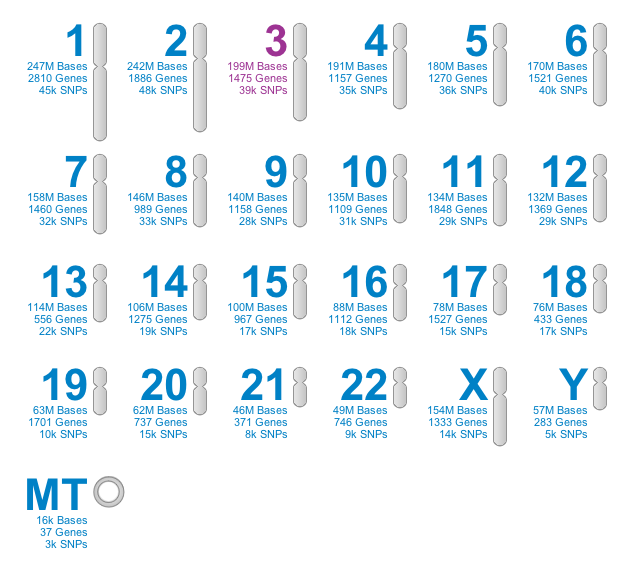What do I buy: a cleaning robot, an e-ink powered ebook, or a personal genetic test from 23andme.com? This is one of those terrible trilemmas facing geeks who are not willing to sacrifice financial stability for having all the coolest gadgets. I chose a 23andme test, and haven’t regretted it.
The factoid that always is mentioned in the press about 23andme is that its co-founder Anne Wojcicki is married to Google co-founder Sergey Brin. This of course means that the data that 23andme is collecting is going to be used to help Google’s Skynet to gain the upper hand in the forthcoming war.
23andme’s service works like this: you give them some money (at the time when I write this the price is $399, but it used to be over $800), they send you a test tube into which you spit, some special preservative solution, and a return envelope. You follow some simple instructions and send your spit to a processing facility. Then you wait (this is the hard part). In a month or so (it depends how long the backlog of orders is) you recieve an email telling you that you can log into 23andme.com and take a look at the results.
The processing that they do in the lab creates a data file that represents an impressive number of genetic data points called SNPs or single-nucleotide polymorphisms. The way I understand it, SNPs are known variations that happen in DNA sequences. Much of the DNA stays the same for all people, but there are some variations in a single location. Let’s say there’s a string of DNA in humans that goes
G-A-T-T-A-C-A
C-T-A-A-T-G-T
and 6 positions there are the same for everyone, except the seventh, which is sometimes AT and sometimes GC. So basically it’s a single position on the one of the 23 chromosomes or mitochondrial DNA (I guess 23andmitochondriaandme was shot down as a possible name for the company) that statistically is different from person to person as opposed to long stretches of DNA that stay the same.

Scientists all over the world are studying the correlations that SNPs have with disease risks and traits. I guess these studies go something like this: you grab 500 programmers that use emacs editor and 500 that use vi. You have a hunch that editor preference is related to gene C4711. You sequence the dna of all your coders looking for SNPs in the gene C4711 that are one way in your vi-using alphas and another way in emacs-using sub-omegaloids. Then you find that in most of vi users SNP rs1729 is AA. Then you come out and say – AA in s1729 increases the odds of a programmer preferring vi by 47%.

The more people that a study has – the better the results. 23andme has genetics experts on staff that sift through mountains of these studies, rank them, and then tell the website people to add results to the interface. This way you can go to 23andme.com and see (as of right now) that tell you right away what your lifetime chances of getting 10 diseases. Some, like Parkinson’s, they don’t let you see without you agreeing to see it yourself. Sergey Brin was reported in the media to get some bad news from that particular one (mine came back “Typical Risk” which means that my chance of getting Parkinson’s is about 1.6%, same as everybody else).
A lot of people that I talked to about genetic testing told me that they’d “rather not know”. It’s true that some of the things that you might learn will make you worry without being able to do anything about it. On the other hand, there are some that you might be able to do something about.
“24.1 out of 100 people of European ethnicity who share this genotype will get Prostate Cancer between the ages of 35 and 79” vs “17.8 out of 100” on average. Here I learned that I have about 1 in 4 chance of getting prostate cancer. Prostate cancer is one of the relatively treatable ones if caught early, but with unpleasant diagnostic procedures. All of a sound “digital exam” does not sound so bad, and I guess I’ll have to bend over and cough a lot more often than I otherwise would. I’m not sure what coughing does, but the “digital” part has nothing to do with electronics or numbers.
There are also 10 traits that are available right now. The most interesting one for me was “Resistant to infection by the most common strain of HIV people usually encounter, though protection is not complete”. I apparently have two copies of something called “Delta32 version of CCR5”. “Although people with two copies of Delta32 are highly resistant to the most common type of HIV, they can be vulnerable to strains of the virus that do not use CCR5 to enter immune cells”.
This makes me a little bit more at ease when I donate blood, even though I know that the chances of getting infected with AIDS at a blood donation are already less than winning that Mega jackpot. On the other hand Dr. Asimov died of AIDS that he received through a transfusion. What’s more interesting, is that this is the same mutation that prominently figured in the media with the AIDS patient who was cured through a bone marrow transplant.
Then there’s a section that has 79 research reports. These get a rating fоr “research confidence”. I, for instance, have an elevated risk of obesity from research that has a three star rating.
Doctor House would have loved getting access to this kind of data for every one of his patients. There are risks for rare diseases mentioned on the show Ankylosing spondylitis, Hemochromatosis, Bloom’s syndrome, and everybody’s favorite – Lupus (which it’s never).
One of the tests included in 23andme is for muscle performance, the one that was in newspapers lately because it was offered by a few companies. The news angle was that sports obsessed parents paid hundred of dollars to find out if their kids have sprinting or marathon ability. Mine says: “One working copy of alpha-actinin-3 in fast-twitch muscle fiber. Many world-class sprinters and some endurance athletes have this genotype.” This sounds plausible – for a fat dude I have an uncanny ability to sprint, yet suck at long distances.
But wait, this is not all. For the same low price you also get some ancestral info. This comes in a form of maternal and paternal haplogroup. I am not sure I understand the what haplogroup is very well, and found 23andme’s infographics somewhat confusing. From what I understand a haplogroup is a number that is attached to a certain mutation (a few SNPs maybe?) that arose thousands of years ago and that has been statistically crosslinked to people living in certain geographical locations.
My paternal haplogroup is E3b1c1* – “populations: Ethiopians, Jordanians, Ashkenazi and Sephardic Jews”. My maternal haplogroup is H5a* – “populations: Lebanese, Polish, Irish”. Both of my ancestral branches are supposedly Ashkenazi, and I guess haplogroups are not a high enough resolution to prove or disprove Jewish ancestry. All they do is tell you that the progeny of your very remote ancestor was likely found in certain wide geographic locales “before the era of intercontinental travel.” What’s interesting is that there’s a small chunk of my maternal haplogroup’s population in Siberia.
23andme is a true Web 2.0 service (in the good sense of that expression). There’s a blog called The Spittoon. In between educational (sometimes interesting, sometimes boring) posts about genetics they have a section called “SNPwatch“. There they write about new research and usually provide a link to raw data in your 23andme profile. So for instance there was an article titled “Variants in Genes for Carcinogen Transporters Linked to Lung Cancer” about a mutation that prevents lungs from clearing out cancer-causing chemicals. Then you can click on two links and see if you have that mutation (to my relief I don’t).
There are some social network features: you can compare your DNA profile to your relatives. I’m not sure if hilarity might ensue because I think you can figure out possibility/impossibility of paternity and maternity, like Dr. House did in that episode. You can even compare your DNA to other users of 23andme – you have to accept a “friend” request for that. I’m not really sure what’s the fun in that. You can participate in surveys that might be used for research (there isn’t one yet about vi vs. emacs yet, but there are some other ones).
It does not look like the $400 fee even covers the cost of gathering the data (there no further fees as of now) or paying for staff/website maintenance, and ongoing research. I’m not really sure what the business model here is (and that makes me a little nervous. Businesses like this remind me of an old Yiddish joke:
Moyshe is selling boiled chicken eggs. He buys them for a kopek each and sells them for a kopek each. Chaim asks – “Moishe – where’s the profit in this?” “What, are you stupid?” – answers Moyshe. “I get to keep the broth”.
My guess is that the “broth” here is an opportunity to conduct groundbreaking research and maybe sell the anonymized data. That, and helping Google’s Skynet find and assassinate John Connor.
I don’t really worry too much about being denied insurance in the grim meathook future that surely is coming just because I used 23andme. There’s legislation against that on the books right now, and if insurance companies will be able to deny coverage based on genetics they’ll be much more likely to get this info by requiring a blood test.
I really wish I could get the data from my grandparents (none of whom are sadly alive). I will buy kits for my entire family though as soon as I’ll be willing to part with another chunk of disposable income (I do want that dang Kindle first though).




